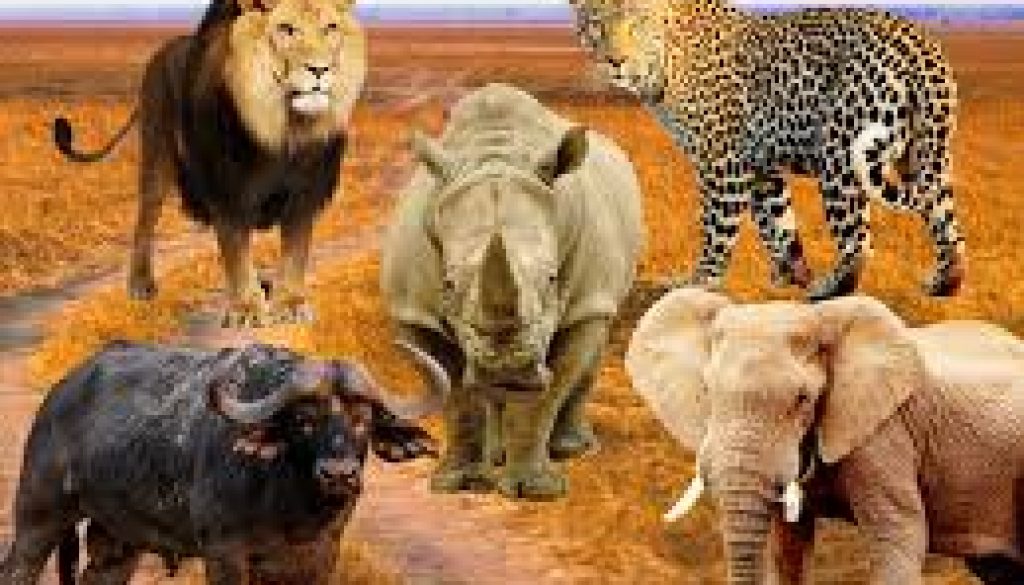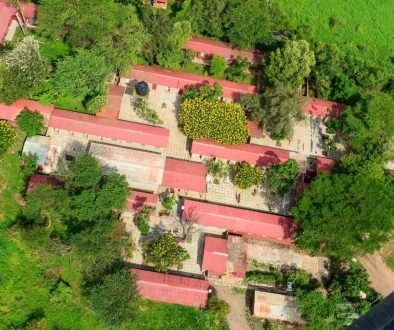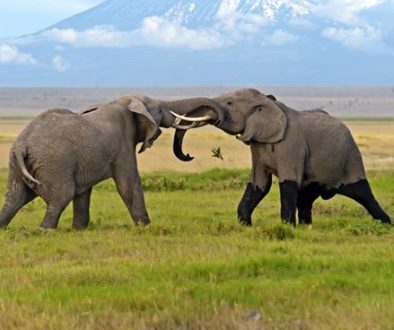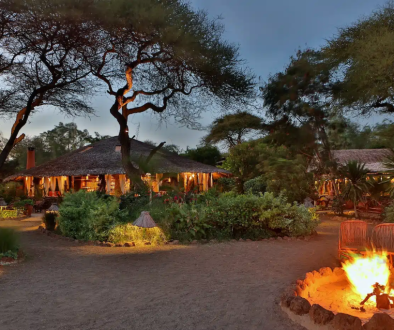The Big Five in Amboseli National Park
The Big Five in Amboseli National Park:An Unforgettable Safari Experience
What Are the Big Five?
The term “Big Five” refers to five iconic African mammals: the lion, leopard, elephant, Cape buffalo, and rhinoceros. These animals, once the most coveted trophies for hunters, are now highly sought after by safari-goers. While the term originated from the challenges of hunting them on foot, the Big Five today symbolize wildlife conservation and biodiversity in Africa.
Definition and Significance
Amboseli National Park, recognized as a UNESCO Man and Biosphere Reserve, is a significant site for wildlife enthusiasts and researchers. Its one of the greatest places to take a safari tour in Kenya and a hot safari destination in Kenya. The park hosts four of the Big Five—elephants, lions, leopards, and Cape buffaloes. Sadly, rhinos, once a part of this ecosystem, are now extinct in the area due to past poaching.
Spanning approximately 392 square kilometers near the Kenya-Tanzania border, Amboseli offers a unique landscape with savannah plains and dramatic views of snow-capped Mount Kilimanjaro. This park, aptly named the “Land of the Giants,” boasts some of the largest herds of elephants in Africa, further solidifying its status as a premium safari destination.
The Big Five Species Overview
- African Lion: The “King of the Jungle,” symbolizing strength and power, plays a crucial role as a top predator in the ecosystem.
- African Elephant: The largest land mammal, known for its intelligence and social complexity, is a keystone species in African savannas.
- African Leopard: An elusive and solitary predator, known for its stealth and adaptability, often found in trees or rocky outcrops.
- African Buffalo: A large and powerful bovine, living in herds and known for its unpredictable behavior, is an important prey species for lions.
- Rhinoceros: Critically endangered due to poaching, rhinos are unfortunately absent from Amboseli.
Why Amboseli National Park?
Wondering why take an Amboseli safari tour? Amboseli National Park is a must-visit for several compelling reasons. It’s a prime location to see four of the Big Five animals in their natural habitat. The park boasts breathtaking views of Mount Kilimanjaro, creating a picturesque backdrop for wildlife encounters. Amboseli’s diverse ecosystems—savannahs, woodlands, and swamps—support a wide array of wildlife, including over 420 bird species, making it a haven for birdwatchers too. Ifyour looking for the best Amboseli safari tour company then Wild Side Kenya Tours and Safaris is the best Amboseli Tour Company to approach.
Unique Habitat and Ecosystem
Amboseli’s unique landscape, spanning 392 square kilometers, features savannah plains, dry lake beds, and the awe-inspiring presence of Mount Kilimanjaro. The park’s underground water supply, originating from Kilimanjaro’s ice cap, sustains a variety of habitats and wildlife. The “Land of the Giants” is particularly famous for its vast elephant herds, but it also supports over 50 different animal species, contributing to a rich and complex ecosystem.
Scenic Views of Mount Kilimanjaro
Amboseli offers postcard-perfect moments, with elephants traversing the savannah against the majestic backdrop of Mount Kilimanjaro. The snow-capped peak adds a touch of magic to the wildlife viewing experience, creating unforgettable memories and stunning photographs.
The Big Five in Detail
Elephants of Amboseli
Amboseli is home to over 1,600 elephants, the highest population in Africa. These elephants, organized into 58 distinct family groups, are known for their impressive tusks and social bonds. The Amboseli Trust for Elephants plays a crucial role in their conservation and research.
Lions in their Natural Habitat
Over 100 lions roam Amboseli’s plains. You’re most likely to see them during early morning or late evening game drives when they’re actively hunting or patrolling their territory. Witnessing these apex predators in action is a thrilling experience.
Leopards: The Elusive Predator
Leopards are notoriously elusive, spending their days resting in trees or rocky outcrops. Their nocturnal hunting habits make them a challenge to spot, but night game drives offer a chance to witness these magnificent creatures.
Buffaloes: Their Role in the Ecosystem
Large herds of buffaloes can often be seen grazing on the dry lake bed of Amboseli. These powerful animals play a vital role in the ecosystem, both as prey for lions and as influencers of grazing patterns for other herbivores.
Rhinos: Conservation Status and Efforts
Sadly, rhinos are no longer found in Amboseli due to past poaching. However, Kenya has made significant strides in rhino conservation, with populations increasing in other parks like Ol Pejeta Conservancy, Meru National Park, and Lake Nakuru National Park.
Best Times to Visit Amboseli
Amboseli is accessible year-round, but the dry season (June to October) offers optimal wildlife viewing. During this time, animals congregate around water sources, making them easier to spot. The park’s compact size allows for a fulfilling safari experience in just a couple of days.
You can check with us as we are an Amboseli safari company based in kenya and some of the tours within Amboseli include 7-Day Masai Mara/Nakuru/Amboseli/Tsavo West-Mombasa which is a good one to try.
Seasons and Climate Considerations
- Dry Season (June to October): Excellent game viewing due to sparse vegetation and concentrated wildlife around water sources.
- Wet Season (November to May): Lush green landscapes, but wildlife may be harder to spot.
- Long Rains (March to April): The dry plain transforms into a shallow lake, attracting wading birds.
- Green Season: Wildlife is more visible due to abundant food.
Optimal Months for Wildlife Viewing
The best time to see the Big Five in Amboseli is during the dry months of December to February and June to October. These periods offer better visibility and increased animal activity around water sources.
Accommodations and Safari Options
Amboseli offers a diverse range of accommodations, from luxury lodges to tented camps and budget-friendly options. The park’s compact size makes it ideal for first-time safari goers, allowing for a comprehensive experience in a short time frame.
Luxury Lodges: A Premium Experience
Luxury lodges in Amboseli provide an indulgent safari experience. Guests can enjoy stunning views, high-end amenities, personalized service, and unique experiences like private guided tours. Many lodges also prioritize sustainable practices and community engagement.
Tented Camps: Close to Nature
Tented camps offer a more immersive experience, allowing guests to feel closer to the wilderness. These camps range from luxurious options to budget-friendly choices, all providing breathtaking views and opportunities to connect with nature.
Tips for Wildlife Photography
Capturing the beauty of Amboseli’s wildlife requires the right gear and techniques.
Essential Gear for Capturing Wildlife
- Wide-angle lens: Capture the grandeur of the landscape and wildlife.
- Zoom lens: Focus on intimate details and get closer shots.
- Camera hide: Access unique perspectives and avoid disturbing wildlife.
- Early morning game drives: Take advantage of the best lighting conditions.
- Patience: Be prepared to wait for the perfect shot.
Techniques for Photographing the Big Five
Photographing the Big Five requires patience, adaptability, and the guidance of experienced guides. Utilize their knowledge to increase your chances of capturing stunning images of these elusive animals.
Maximizing Your Safari Experience
A safari in Amboseli is an unforgettable adventure, filled with anticipation and wonder.
Guided Tours vs. Self-Drive Safaris
Guided tours offer several advantages:
- Knowledgeable Guides: Provide insights into animal behavior and habitats.
- Night Game Drives: Witness unique wildlife activity.
- Rare Sightings: Guides have the expertise to spot elusive animals like leopards.
- Strategic Positioning: Guides know the best spots for wildlife viewing, especially during the dry season.
- Additional Activities: Many tours include guided walks, evening bonfires, and other experiences.
Timing Your Outings for Wildlife Sightings
- Dry Season (December to February, June to October): Best for overall wildlife viewing, especially the Big Five.
- Early Morning/Late Evening: Ideal for spotting lions.
- Night Safaris: Excellent for observing lions hunting.
- Low Season (November to May): Best for birdwatching and clear views of Mount Kilimanjaro.
Conservation Efforts in Amboseli
Amboseli National Park is committed to preserving its unique ecosystem and wildlife.
Importance of Protecting the Big Five
Protecting the Big Five is crucial for maintaining biodiversity and ecological balance. These animals play vital roles in their ecosystems, and their conservation supports tourism and local economies.
Local Initiatives and Community Involvement
- Eco Adventure Safaris: Promotes eco-friendly practices and supports local communities.
- Amboseli Trust: Contributes to elephant conservation and research.
- Community Involvement: Encourages respect for wildlife and adherence to park regulations.
- Cultural Encounters: Promotes Maasai traditions and provides economic opportunities for local people.
You can check out this Amboseli Safari itinerary 6-Day Super Mid Range Masai Mara/Nakuru NP/ Amboseli NP if your looking for amboseli safari tour company in kenya.
Conclusion
Amboseli National Park offers an exceptional safari experience, with its abundant wildlife, breathtaking scenery, and commitment to conservation. By choosing the right season, accommodation, and activities, you can maximize your chances of witnessing the Big Five and create unforgettable memories in this remarkable destination. Remember to respect the wildlife, embrace the local culture, and cherish the beauty of Amboseli. If your looking for cheap amboseli safari tour company that will give you unforgettable safari experience then choose Wildside Kenya Tours and Safaris.







